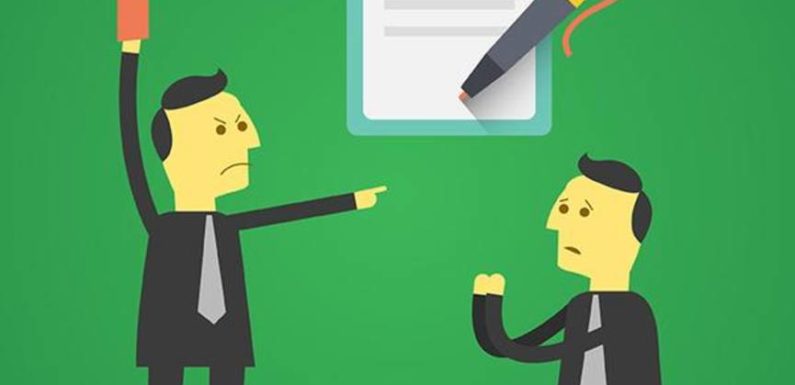
A Google Penalty could indicate that a website’s rankings have taken a beating or that it could be no longer existent on SERP. The Google Penalty can be manual or algorithmic. If the spam team of Google finds out that a website is in direct violation of the Webmaster Guidelines, then they will issue a manual penalty. The black hat SEO specialists dare do that, but the human reviewers of Google are good at tracking down the spam content. On the other hand, Google keeps releasing new algorithm updates from time to time.
The penalty is dealt with stringently by Google, so much so some algorithms are released specifically for that. If your website’s content is not optimized or correspond with Google’s quality standards, so as to clear algorithm filters, then it could get penalized.
Although both manual and algorithmic Google Penalty cause negative impacts to search rankings, knowing the difference between the two can help you in recovering the site. In the event of Google Search Console notifying you of a manual penalty, you would have to fix the issues mentioned in the review.
Then, submit a “reconsideration request” on the Search Console. After that, Google will decide whether or not to approve the reconsideration request. If it is approved, then the manual action will be taken off of your website. If not, you would have to file the same thing on the Console, which means more headaches to follow.
On the contrary, if the Google Penalty is algorithmic, then you would not have to follow such stringent procedures. However, you would still have to fix the issues that lead to the algorithmic penalty in the first place.
In any event; the outcome of a Google Penalty can be detrimental to rankings. That said, it is something that can be avoided as explained in this post. When you get the hang of it, you will understand that all these things correlate in SEO.
Way #1: Avoid PBN and Low Quality Link Exchange
Not just from private blog networks, but even paid links from somewhere are a no-no when it comes to the Webmaster Guidelines. Likewise, even selling links to personal blogs and sites are not advisable. Instead, stick to ways to build organic backlinks to your site to achieve positive impacts on SERP. You can achieve that by posting quality content that can generate backlinks.
Way #2: Avoid Keyword Stuffing
When plenty of keywords are used on a website, and they have no relevance to the content published on the site, it becomes mere stuffing of keywords. Although the aim of keyword usage is to enhance page rankings, its over usage is a black hat SEO practice which Google does not encourage.
The less keywords you use, the better off you are in terms of achieving higher rankings. It is the concise, elliptical content and optimized keywords that can take your site to top positions on the SERP.
Way #3: Plagiarized Content Also Invites Google Penalty
The very essence of writing or publishing content for the web is to keep it as unique as possible. The quality of content means keywords are kept to a minimum and uniqueness comes with practical SEO knowledge. Sometimes, avoiding plagiarism can be a matter of giving credit where due to the author or source.
The blockquote pays off, especially on the news or posts where quotes are used. If you do not use block quote accordingly or plagiarize content, the site could get flagged.
Way #4: Avoid Using Interstitial
What a layman calls intrusive pop-up ads, Google’s update calls interstitial. The advertisements pop up just as a page is downloaded on a mobile device, thus impacts the user experience. Often, such pop-ups can be detrimental to UX and that can disinterest your target buyers and even make them leave the site. The last thing an SEO would want to deal with is bounce rates.
Way #5: Stay Away from Cloaking
This is a black hat SEO practice, in which the content or site info presented to Google Bot is one and shown to the users is something else. It can violate the quality standards of Google and even lead to a penalty.
Way #6: The Hidden Text Can Earn You a Google Surprise!
The texts or links that cannot be seen on a website can be indexed by Google. In other words, linking a character in a content or hiding white texts on the same background are examples of these practices. Never do these things to achieve better search rankings, as they can bring consequences to the contrary.
Way #7: Avoid Typo Squatting
Generally, it is the technique or techniques termed as “black hat SEO” that invite Google Penalty. This one adds to the list of such SEO techniques. This is when one registers a website domain, with a typo, on a celebrity’s name and with a bad intention.
You might even wonder who even opens a website or URL with a typo. That can be the case at times – not all are linguists – and that is what such sites relies on for traffic.
Author-Bio:
Jayalekshmi is an SEO Analyst working at MyHobbes.com for last 2 years. She completed her Bachelor’s Degree from Musaliar College of Engineering and Technology, a diploma course in digital marketing and Oracle Certified Associate helped her to achieve the higher understanding of the algorithm and how it behaves with its latest trends. In her professional career, she tried to network with industry relevant people to enhance her knowledge in the algorithm. Her career at Gizmeon helped her to do the same. In her free time, she learns classical music and cooking wonderful dishes.

